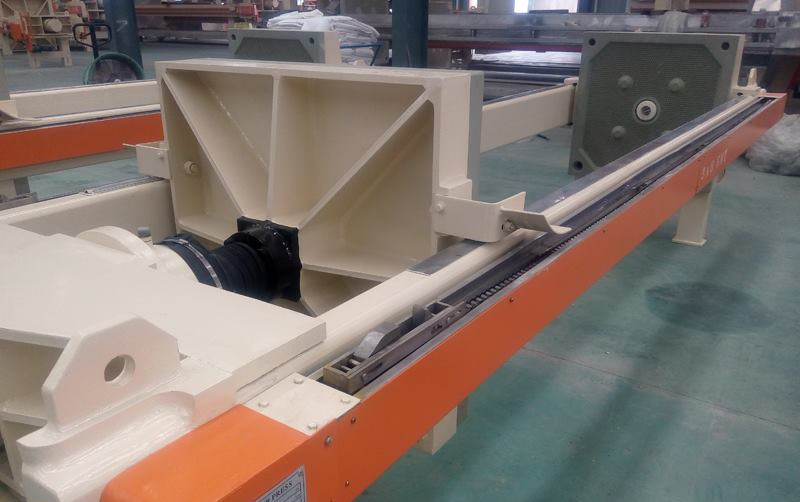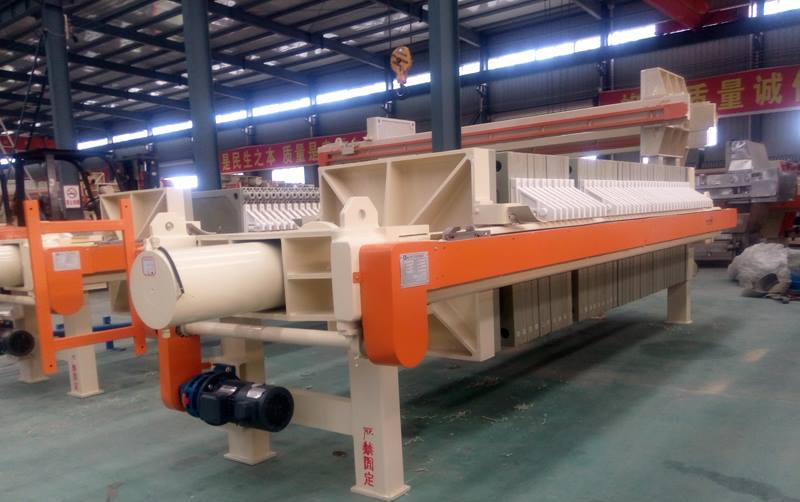Important equipment in photovoltaic wastewater system--diaphragm filter press
At the sewage treatment project site, we often see ordinary chamber filter presses. However, with the increase in water production and strict environmental protection requirements, ordinary filter presses can no longer meet the daily treatment needs of some special projects. Especially in photovoltaic wastewater systems, Membrane filter presses are needed.
1. Preparation before operation
Before starting the unit, the following items should be carefully checked:1.1 The machine can be put into use only after installation, adjustment and confirmation.
1.2 Check the condition of the filter cloth. The filter cloth must not be folded or damaged. The filter plates on the filter press must be aligned.
1.3 Before starting the filter press, remove the debris on the filter press track to ensure that the filter cloth has been cleaned.
1.4 Check whether the hydraulic transmission part of the filter press is working normally and whether the hydraulic oil is sufficient (hydraulic oil model MOBIL DTE25).
1.5 Check whether the joints of each port are connected incorrectly, whether the flange bolts are tightened evenly, and whether the gaskets are properly padded.
1.6 Check whether the faucets on the filter plate are all open and whether the valves on the filtrate pipe are open, otherwise the filtrate cannot be discharged.
2. Start-up procedure
Operation is carried out according to the following procedures: press the filter plate → start the pump to feed → turn off the feed pump → start the high-pressure water pump → stop the high-pressure water pump → backflush--> pull the filter plate to unload → clean and check the filter cloth → prepare to enter the next cycle.
2.1 Clean and organize the filter plate and filter cloth, and then turn on the power.
2.2 Press the pressing button on the electronic control interface to start the hydraulic pump. The filter press automatically presses. When the pressure reaches the set pressure, the hydraulic pump automatically stops.
2.3 After confirming that the inlet and outlet valves of the sludge pump are all open, turn on the sludge pump. At this time, you can see the filtrate slowly flowing out of the faucet on the filter press, and the filter press starts to work normally.
3. Stop procedure
3.1 Observe the amount of filtrate flowing out of the filter press. If the filtrate is very little or the sludge pump takes a long time to operate each time, it can be considered that the sludge pressing has been completed. Start the clean water pump for secondary pressing. Generally, the pressure is maintained for 10-15 minutes.
3.2 After the filtrate of the filter press has completely flowed away, the release button on the electronic control interface can be pressed, and the filter plate of the filter press will slowly release. At this time, the sludge will fall into the sludge storage hopper, and manual assistance may be required to unload the sludge.
3.3 After the sludge is unloaded, rinse the filter plate and filter cloth with tap water, and then press the compression button on the electronic control interface to compact the filter press.
4. Emergency stop
If any of the following situations occurs, stop the machine immediately and report to the duty supervisor. If the cause of the accident is not found out, it is not allowed to start the machine at will.
4.1. The motor exceeds the temperature rise (≤65℃), and the motor catches fire and smokes.
4.2 The noise and vibration of the unit are too large.
4.3 The abnormal sound of the pump is too loud, and there is an abnormal metal friction sound.
4.4 Electric shock and water inflow to the motor are found.
4.5 Exceeding the rated current.
4.6 The pump body leaks oil, the pipeline system ruptures, and serious deformation occurs.
4.7 Mud is sprayed out between the filter plates of the filter press.
5. Maintenance
5.1 Pay attention to the changes in the filtrate flow rate of the filter press faucet, whether the mud inlet is well sealed, and check whether the filter plate and filter cloth are clean (no large pieces of mud, etc.) before starting. It is recommended to inspect once every hour. If there is any abnormality, stop the pump in time.
5.2 The unit runs in a balanced manner and the sound is normal. If there is a loud noise, abnormal phenomenon, or large vibration, the unit should be stopped for inspection and troubleshooting.
5.3 Check the dripping of the valve pipeline to ensure that there is no leakage.
5.4 Check whether the temperature rise of the motor and bearing is within the specified temperature rise range (the motor temperature shall not exceed 65℃).
5.5 During the daily maintenance and repair of the filter press, appropriate protective measures should be taken, and protective glasses, acid-resistant and alkali-resistant rubber gloves, etc. should be worn to prevent the filtrate from splashing the pump body or the human body. If the filtrate splashes the pump body or the human body, it should be rinsed and dried with clean water in time.
5.6 When the filter press is stopped for a long time, the mud should be removed, and the filter plate and filter cloth should be rinsed with clean water, and the filter plate should be closed.

Features and advantages:
- High efficiency and more thorough dehydration: The high pressure membrane filter press greatly reduces the moisture content of the filter cake through diaphragm pressing, thereby saving subsequent drying costs and time.
- Flexible operation: The equipment can adjust the pressure and pressing time according to different material characteristics to optimize the filtration effect.
- Reinforced TPE elastic diaphragm plate: Stronger corrosion resistance, high temperature and high pressure resistance, and can also be used for some high-temperature materials after adjustment. High strength and longer life.
- Low failure rate: Filtrate leakage during filtration rarely occurs, which guarantees the purity of the material after filtration to a greater extent, while also reducing material waste and environmental pollution.

评论
发表评论